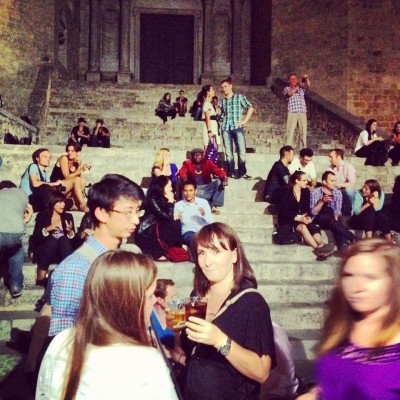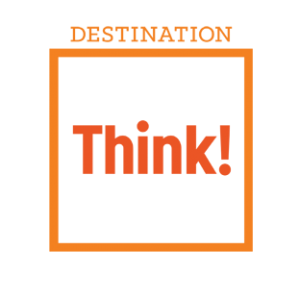The Archives
-
Management, Marketing, social media
9 criteria for selecting travel bloggers
01.29.13 | Permalink | 11 CommentsThis post was first published as a guest post on the TBEX blog.

Blogger gathering at TBEX in Girona, SpainAt the moment, blog trips and bloggers hosted by a Destination Marketing Organisation (DMO) are still a bit of a novelty. DMOs don’t yet completely realize the value bloggers and bring but I expect an explosion in the near future when DMOs understand the value while travel bloggers realise the benefits a blog trip can offer and new travel bloggers want to join the club.
DMOs need a way to sort through all these requests. We’re not big fans of a one-size-fits-all approach to measure the value of bloggers but instead we like to match bloggers based on a DMO’s specific marketing goals. We also recommend that our clients take a pro-active approach to bloggers by inviting the ones with the best fit instead of a reactive one by waiting for requests to come in.
We have a good relationship with dozens of bloggers and a database with hundreds more. We have 9 criteria to select bloggers for blog trips and other campaigns, which are outlined in detail below. When developing social media strategies we recommend that our DMO clients also use these criteria to manage individual blogger requests.
1) Value to the blogger
I mention this one first, because if there’s no value for the blogger then there’s no use in working together. A blog trip or campaign needs to be a win/win situation. We’ve learned that it’s important that the DMO and blogger know each other’s expectations. Sometimes a blog trip might not work out for a variety of reasons. And that’s okay. But it’s better to set out the realities and expectations on both sides ahead of time.
2) Reach; the size of the audience
This is an important metric, but not as important as you might think – at least, not to us. We would rather work with a blogger who has a smaller audience and a higher influence. A blogger with 2,000 Twitter followers may be of more value than one with 50,000 if those 2,000 people are passionate, engaged and are likely to be influenced by the person they follow.
We use tools like Compete.com, Quantcast and Alexa to get an indication, or ask the blogger for data. We will also look at Twitter followers, Facebook likes, and other statistics. For bloggers, it’s a good idea to have this info handy as DMOs will ask for this.
3) Audience demographics
This criteria includes things like what language you blog in and what countries your readers are from, their age, education, income, etc. We’re not that interested in where the blogger comes from because their audience might come from a completely different place.
We will use Quantcast and sometimes other tools for this, although a lot of blogs don’t have enough traffic for these tools to provide valuable metrics. We sometimes ask bloggers, but we have had to make assumptions at times.
4) Influence in a niche
This one is more important to us than reach. We’re looking for people who are an authority in a subject matter. That’s the power of the Internet – there’s a community for every passion. It’s safe to assume that a wine blogger has an audience interested in wine. If we’re working with a destination that is seeking to leverage its wine products or experiences, we will pick a wine blogger with a small audience over a general travel blogger with a larger audience in most cases.
In order to determine influence, we look at things including comments on a blog (volume and types of comments) and how the blogger interacts with her/his audience. Why? It’s that personal connection that makes a blogger unique and influential. And we will also look at repeat visitation to the blog. This is an indicator of how loyal an audience is and therefore the influence the blogger has.
What we sometimes observe is that bloggers with a large audience lose the personal connection with their readers. Their blog becomes more like a traditional publication online. That’s to be expected and not necessarily a bad thing, it just changes the types of initiatives we will invite them for, and the approach we take. They may be better suited for a traditional press trip.
5) Connection to other influencers
This one is closely related to #4. Blogging is social. We believe that a blog trip or a blog campaign’s value doesn’t just come from the value as a result of the produced content, but also from the personal connections created. A blogger with a lot of connections to other influencers is more desirable as that means there’s a better chance that their messages are then amplified or retweeted by other influences. A good relationship with one blogger can also lead to a referral to another. We often ask other bloggers for suggestions about other writers.
6) Quality and style of writing, photography and/or video
This one speaks for itself. We prefer blogs with quality content. And sometimes one blogger’s style fits better with a particular destination brand than another. And it doesn’t mean that we look for moderate bloggers only, by the way. We seek honesty and transparency, otherwise a message won’t be credible. The blogger at TBEX who writes critical posts just to make PR people uncomfortable would probably not be invited, though (see #9). Often, quality trumps reach and influence.
7) Speed of communication
We don’t have a specific preference. It varies from initiative to initiative. Most of the time, a blog trip is designed to create a lot of social content right away, and speed is important. Other times, it won’t matter too much if it takes a few weeks for us to see a post (months is pushing it). The longer it takes, the more the details and energy are lost. Plus, the copy ends up looking more like it belongs in a traditional publication.
8) Use of technology and tools
Does the blogger tweet, Instagram, or post to fan pages during the trip? This is obviously helpful.
And it also varies. If we’re working on a campaign where we want a lot of content in the moment, Twitter, Facebook, and Instagram are important. In some cases, they’re not.
Sometimes we look for quality, influence, and reach for a specific tool or network. We invited a big Instagrammer to Flanders, for example. The Costa Brava even hosted an Instagram trip.
9) Personality
Is this blogger easy to work with?
We will happily sacrifice reach or influence for a nice person when we’re hosting a group of bloggers. Personality type tells us something about the bloggers’ relationship with their readers, and that’s important in social media. Other factors including professionalism and attentiveness are equally important. If it takes weeks for somebody to reply to an email, or if they don’t follow practical instructions we get worried. We often check references as well by calling another DMO the blogger has worked with.
We have good results using our criteria above. In the future we hope to build out our database so we can be a good matchmaker between bloggers and the tourism industry that delivers benefits for both.

